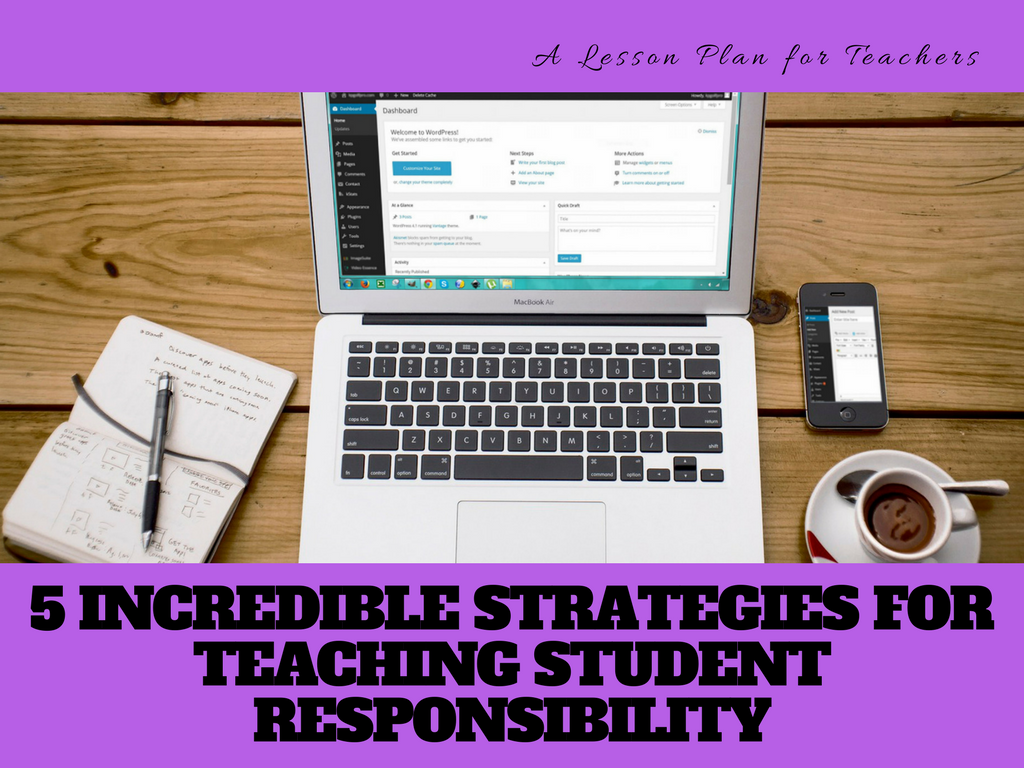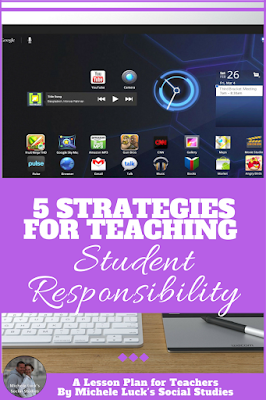As middle school and high school teachers, our classrooms are full of young, budding students who are adjusting to a mature school career in which teachers don’t hand-hold, emphasize syllables in a verbal spelling test, or allow attempt after attempt on a failed assignment that the dog ate. It isn’t easy! It is our responsibility as teachers to develop lesson plans that not only teach content but also responsibility, accountability, career skills, people skills, and more. Focusing on academic knowledge alone gets the job done, but we are still failing our students by forgoing life skills and responsibility in the classroom. Fostering these “non-academic” skills will not only produce a student with good grades, but with well-rounded life skills as well.

While teaching life skills, responsibility, and accountability to our students is necessary, it can be difficult. Using these 5 incredible strategies for teaching student responsibility will help teachers to integrate lessons on responsibility into their regular content-centered lesson plans. As the old adage goes, give a man a fish and he eats for a day, but teach a man to fish and he eats for life. Teaching your students responsibility will not only make your job and their studies easier, but will also set them up for success in life.
1. Keeping & Organizing a Class Notebook or Interactive Notebook
2. Classroom jobs
3. Homework
4. Group Leadership & Collaboration
By highlighting conflicting opinions in a small group setting, students are provided with a perspective on a topic or lesson that differs from their own. This teaching strategy works well when the teacher assigns perspectives that will open a dialogue and encourage students to consider the information they must present from an unbiased point of view.
Human Timeline
Bring a boring, two-dimensional timeline to life by assigning content and dates to each of your students and having them physically stand in chronological order. Not only will this engage students and get them out of their seats, requiring cooperation and collaboration among them, but it will help retention of “boring” dates.
Graffiti Boards
5. Presentations
Bonus Resources!
For more ideas, check out Teaching Students Responsibility, Teaching Strategies that Instruct Responsibility and Getting Students to Take Responsibility for Learning! Also, encourage your students to take an active part in their learning experience, which will further foster responsibility, by taking a Student Survey.
There are unlimited resources online that can help to build student responsibility in your classroom, but the greatest indicator of a successful classroom is commitment from both the teacher and students. Teaching your students the importance of their responsibility and then incorporating these requirements into your curriculum will ensure that your students will be more responsible by year’s end. Use these 5 strategies for teaching student responsibility to foster a sense of class-wide responsibility.

Happy Teaching!
